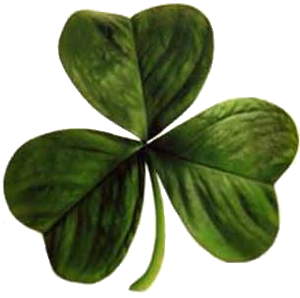 So far I’ve been talking about the Slovenian side of my mother’s family. She also has Irish ancestors (like many many Americans). This is why I wrote my book to have Irish and Slovenian characters so I could explore both. (Shamrock, Wikipedia “Irish clover” by 百楽兎)
So far I’ve been talking about the Slovenian side of my mother’s family. She also has Irish ancestors (like many many Americans). This is why I wrote my book to have Irish and Slovenian characters so I could explore both. (Shamrock, Wikipedia “Irish clover” by 百楽兎)
My mother’s great grandparents came from Limerick Ireland. Margaret Flemming was only 7 in 1855 when she landed in America. She came with a female cousin who was 12 years old. Margaret was supposed to travel on to relatives who was already here in Milwaukee and the cousin was supposed to stay with relatives in Philadelphia. However, when the relatives in Philadelphia saw how young Margaret was they kept her and sent the cousin on to Milwaukee. It hits me how desperate her parents must have been to send her to another country, knowing they wouldn’t see her again, at age 7. To understand why they would take such desperate measures it is important to understand that Margaret was born in the middle of the great potato famine. Though the crops were better in the 1850s the crisis was far from over.
Here are the facts in short: In the 1840s the Irish poor were almost entirely dependent on potatoes for food for a large variety of reasons related to English rule. They were regularly hungry in the summers waiting for the potato harvest. Potatoes are a crop that doesn’t take much care. The men could plant the potatoes, then leave to work on ships during the summer and return for the harvest. All other crops belonged to land owners and were shipped out of Ireland. In 1845 an estimated half of the potato crop rotted from potato blight. The crops failed again in 1846 and 1848. The British response to the blight was to ask the Irish to care for the Irish. They blocked charity efforts so that the population would not be dependent on relief. In addition they didn’t allow other food crops to stay in the country. In the midst of this misery many people couldn’t pay their rents and were evicted (picture Wikimedia – family evicted by their landlord during the Irish land war 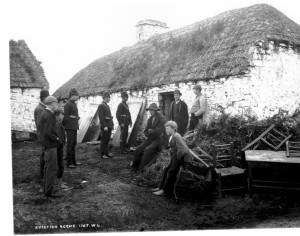 More than 1 million people, in a nation of 8.4 million people died. Several million came to the US, an expensive and dangerous journey on ‘coffin ships’.
More than 1 million people, in a nation of 8.4 million people died. Several million came to the US, an expensive and dangerous journey on ‘coffin ships’.
Some historians also discuss the attitude of the English that Irish people were not really people. The Irish were supposedly inferior specimens, scientists of the day made measurements of Irish people that ‘proved’ that they were little more than animals. The famine was seen as a way of culling the herd and improving the overall health of the Irish population. Most Irish were also Catholic, which was considered a pagan and inferior religion, also justifying maltreatment. For a more in depth exploration of what it was like to live in Ireland in the time of the great famine read Galway Bay by Mary Pat Kelly.
So my ancestors, like so many other Americans came to the US desperately poor and facing starvation. That is enough of a reason to ask American relatives to send money to get children out of the country. John Michael Corbett came from Limerick to Philadelphia in 1861 when he was twelve. John Corbett and Margaret Flemming married in 1874 and had four children including a daughter Margaret (b 1883). Margaret Corbett went to Milwaukee on vacation and fell in love with a German man, Joseph Albert Koetting. In 1912 Joseph came to Philadelphia to ask Margaret to marry him. She opened the door expecting the doctor for her dying mother (Margaret Flemming) and it was Joseph. They married the next year. Here they are at their wedding June 4th, 1913. 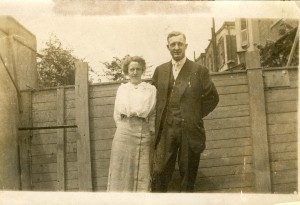 I don’t have any pictures of Margaret Flemming, but John Corbett came to Milwaukee to meet his daughter’s husband’s family. They went to the shore of lake Michigan, and there is just this one picture of a little Irish guy with these big Germans. I don’t know who the other people are.
I don’t have any pictures of Margaret Flemming, but John Corbett came to Milwaukee to meet his daughter’s husband’s family. They went to the shore of lake Michigan, and there is just this one picture of a little Irish guy with these big Germans. I don’t know who the other people are.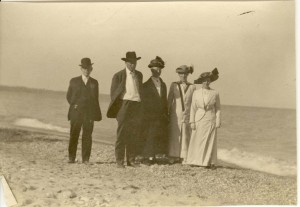
Joseph Margaret Koetting had five children including my grandfather, Joseph Aloysius Koetting. born in 1915. 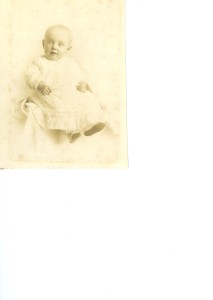
This picture is Margaret Corbett Koetting with John (b 1914) on the lower right, Joseph (b 1915) lower left, Margaret (b 1917) lower middle, and John (b 1919) in arms. Mary is the last (b 1924) not pictured here. 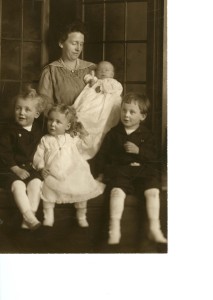
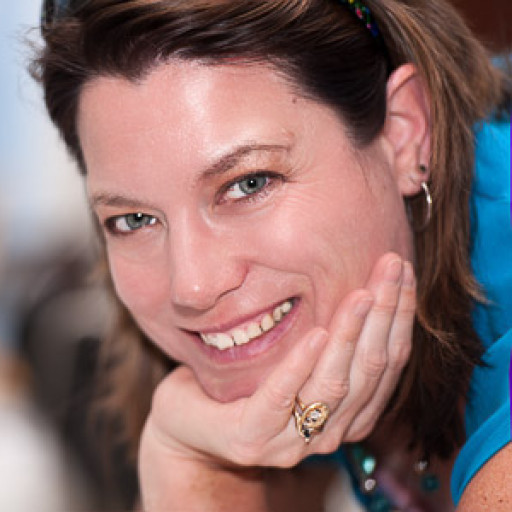
Be First to Comment